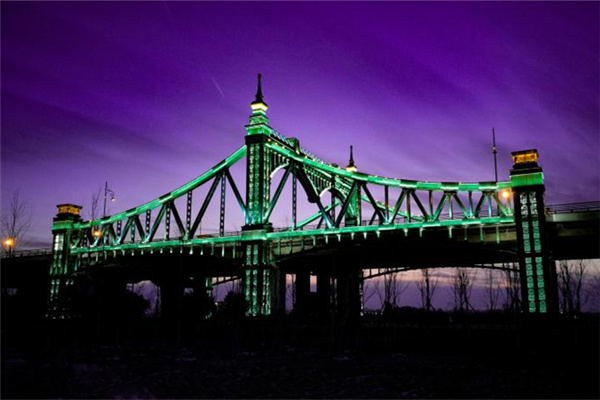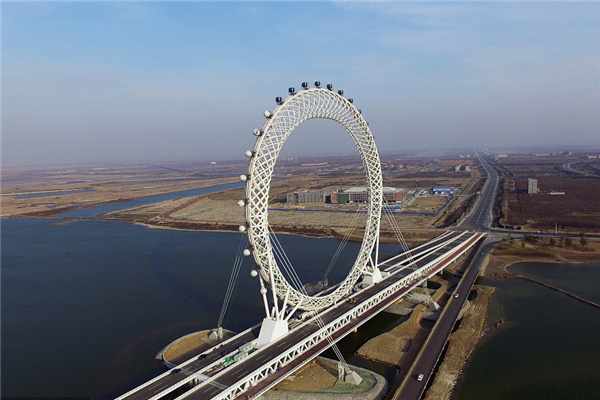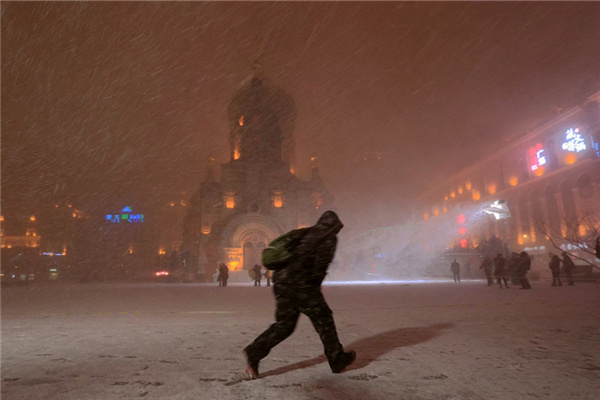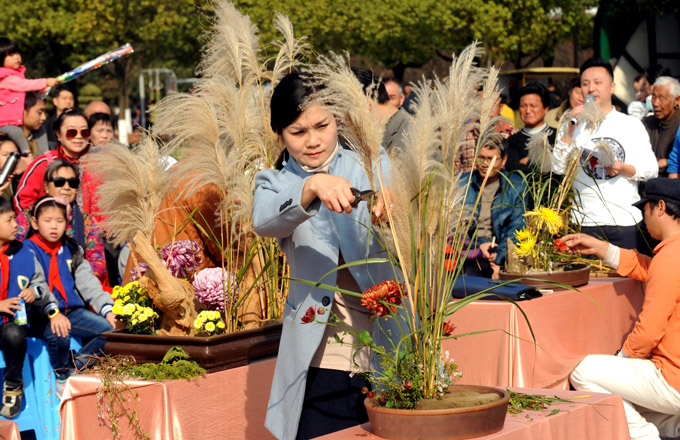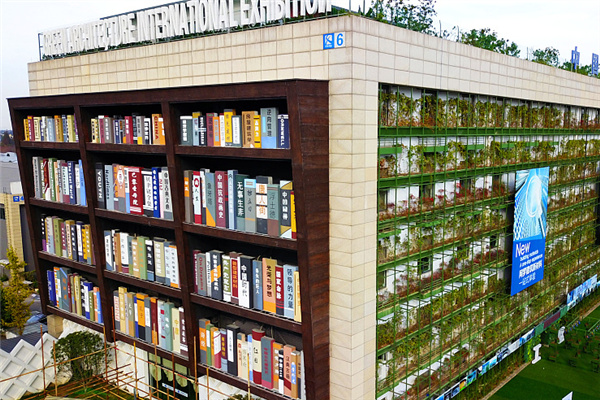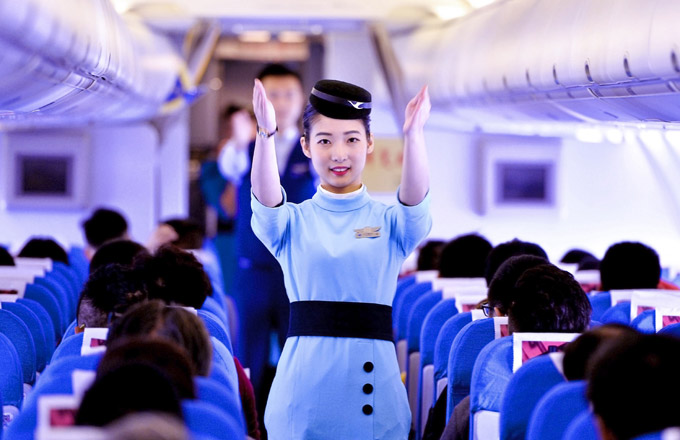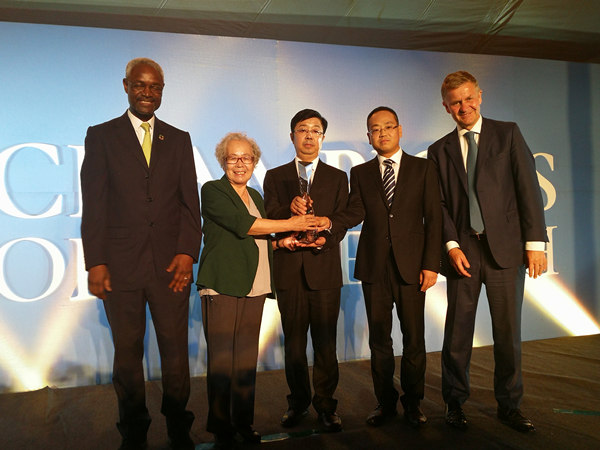

|
Places like Red House and Deda are trying to cash in on people's fascination with Shanghai's past. Gao Erqiang |
The Red House Restaurant has hosted Chinese leaders such as Liu Shaoqi and Zhou Enlai and was a favored haunt of Eileen Chang, the Chinese novelist, best known for Lust, Caution, and Peking Opera master Mei Lanfang.
It was Mei who gave the restaurant its current name in the mid 1950s (it was initially opened in 1935 as Chez Rovere and then switched to Chez Louis).
For decades the establishment was synonymous with high-class French food and dining in the red brick building was a status symbol.
Today, the two Red House Restaurants in Shanghai's downtown, one on Huaihai Road (once known as Avenue Joffre) and one on Shaanxi Road South (once known as Avenue du Roi Albert) still have alluring facades and the menu has kept signature dishes such baked clams a la maison, grilled mustard pork, French onion soup au gratin and Italian cassata. But it's no longer a symbol of the upper crust; it's an affordable place that trades on nostalgia to draw in diners.
"Most customers coming to the Red House Restaurant are looking for the traditional signature dishes. They are the lifeline of the restaurant," said Quan Quan, manager of the Red House Restaurant on Shaanxi Road.
Quan joined the Red House in 1973. He rose all the way from kitchen help staff to become one of a handful of high-level Western food chefs certified by the former Ministry of Labor and Chinese Cuisine Association.
At present most patrons are Chinese, but Quan wants to see more foreign faces. He formed relationships with some international travel agencies to help bring in groups of overseas tourists.
Quan is also adding new dishes to the menu so that it will appeal to a wider spectrum of customers. As a manager, he still likes to cook and experiment in the kitchen.
"It's a passion that I would not give up," said Quan, who was also trained in France in the early 1990s.
With a turnover of about 300,000 yuan a month in the 150-seat eatery, Quan, under the State-owned Shanghai New Asia Fulihua F&B Co Ltd, is operating with small profit margins. Each customer spends about 130 yuan on average for dinner, down from 160 yuan a year ago.
He attributed the decline to the impact of the global economic crisis.
Quan said he has been cautious about making any bold attempts, such as hiring an expat chef. "If we plunge into the red, it would be embarrassing for us in front of the parent company," he said.
Quan's worries may be well grounded. Just a year ago, the restaurant, which features simplistic and modern decoration, was in the hands of a Frenchman who ran the place, under contract with New Asia Fulihua, in the name of HFZ Gourmet & Lounge.
The restaurant served a much more innovative and expensive international cuisine, including escargot, with steeper prices and its clients were mostly expats.
But the Frenchman skipped town, leaving some 3 million yuan in debt.
In hindsight, Quan said he still admires the Frenchman for delivering high quality food and keeping good hygienic standards.
Just a block away, the Red House on Huaihai Road has classic Western dcor, featuring blue, white and red. The three colors from the French flag are intended to bring people back to the Shanghai of the 1930s and 40s, according to manager Cheng Qinchao.
The business is faring better than its sister restaurant. With roughly the same number of seats, it fetches a monthly turnover of 1 million yuan. The three posh private rooms on the fourth floor overlooking the bustling Huaihai Road rival any setting inside a five-star hotel.
Cheng said the eatery also sticks to its original menu, such as stewed oxtail, French-style goose liver and grilled pomfret, but has tried new methods to boost sales, such as accepting many kinds of electronic debit cards.
Cheng prefers the a la carte menu; he tried a lunch menu but it didn't help business that much, he said.
Cheaper meal specials such as set lunches only undermined the reputation of such a prestigious restaurant as the Red House, he added.
But on Nanjing Road West, another long-standing Western food restaurant, Deda, serves up set business lunches on its first floor for only 28 or 36 yuan for the white-collar workers in nearby office buildings. The second and third floors are a la carte.
Deda's mosaic floors, wooden stairs, paintings on the ceiling and French windows give the place a decidedly European atmosphere. Jiang Guangzhao, 93, a Shanghainese who left for Taiwan in 1949 but has since returned, is a frequent customer at Deda. "Food here is great," he told China Daily, in the tones of the old-style Shanghai dialect.
Despite the lunch sets, Lao Jianrong, Deda's deputy general manager and head chef, said the store is mostly keeping its traditional menu and has done little innovating.
"Most of our customers are locals who are fond of traditional flavors. If you do away with these traditions, they won't identify with you," said Lao.
Deda's, similar in size to the Red House restaurants, has an annual turnover of around 6 million yuan.
Deda has recently closed a sister eatery on Ruijin Road but opened a new one a month ago on Yunnan Road food street - a street that houses several long-standing restaurants as part of the government's move to revive Shanghai's culinary past.
That revival work has not been easy. Many renowned Western food restaurants disappeared during the "cultural revolution" (1966-76), falling victims to ideological battles or poor management by State-owned enterprises. Some died in the last two decades during massive urban transformation.
The Swan Pagoda, a popular Italian restaurant on Huaihai Road, was torn down in the 1990s and is now the site of a fancy high-rise office tower. The 73-year-old Donghai Caf on Nanjing Road, a favorite place for senior citizens, was also cleared a year ago from Nanjing Road.
Shi Yiming, a head chef at the five-star Jin Jiang Tower and a referee at many culinary contests, said the fame of restaurants such the Red House appeals to customers.
"They rely on nostalgia. The quality of the food is okay but its presentation and the raw materials they use wouldn't cut it in a five-star hotel," he said.
According to the Shanghai Guide published in 1918, there were already 35 Western food restaurants in Shanghai at time. But the number was down to less than 10 by 1978 before China kicked off its reform and opening-up drive.
Western restaurants have mushroomed in the city over the last three decades. Unofficial statistics show that there are about 1,600 Western food restaurants in Shanghai, including fast-food chains. This makes Shanghai the city with the second most Western food restaurant in China, behind Guangzhou.
While places like Red House and Deda are cashing in on people's longing of Shanghai's past, new restaurants like Jean George, Laris and La Villa Rouge, with average meal costs of 500 to 1,000 yuan or more, have quietly become the city's new status symbols.
Few of the eateries in Eileen Chang's novels about old Shanghai remain and those that do, such as the Shaanxi Road Red House, are struggling to balance their books. But for some a taste of days long gone is filling enough; Mei Baojiu, son of Peking Opera master Mei Lanfang, still visits the Red House occasionally, possibly recalling the days his father brought him there as a teenager.
(China Daily 04/06/2009 page8)
